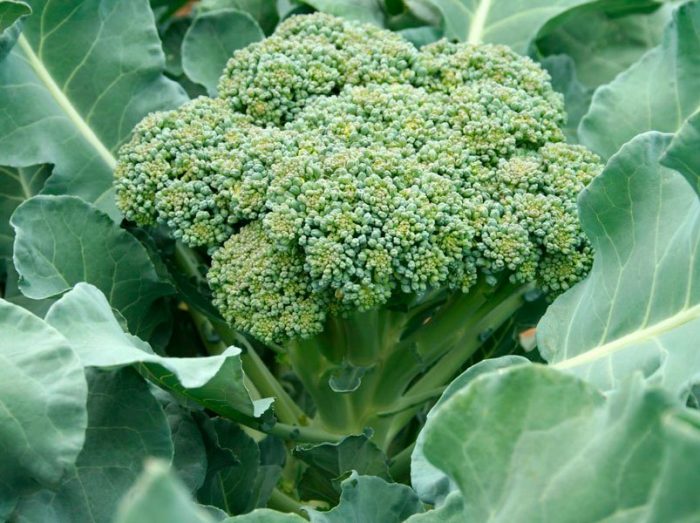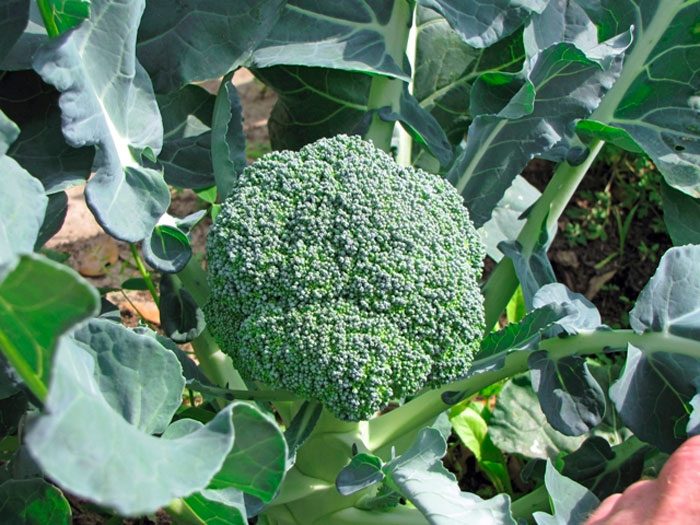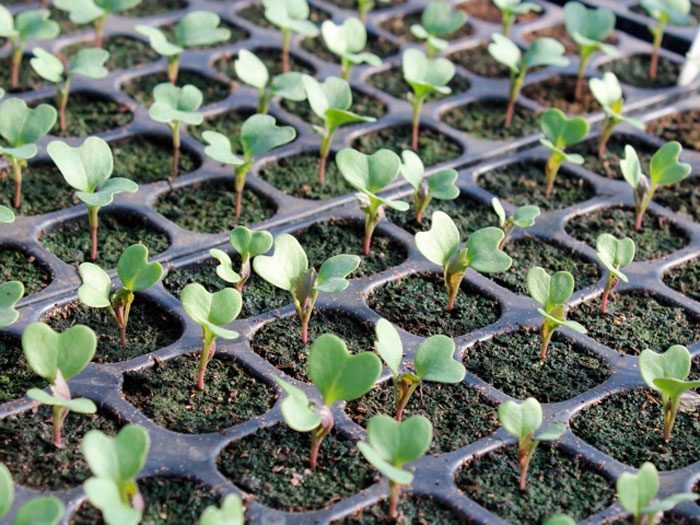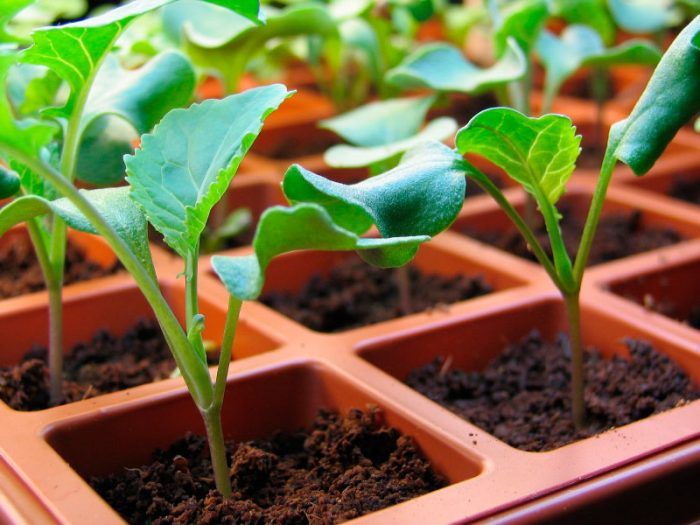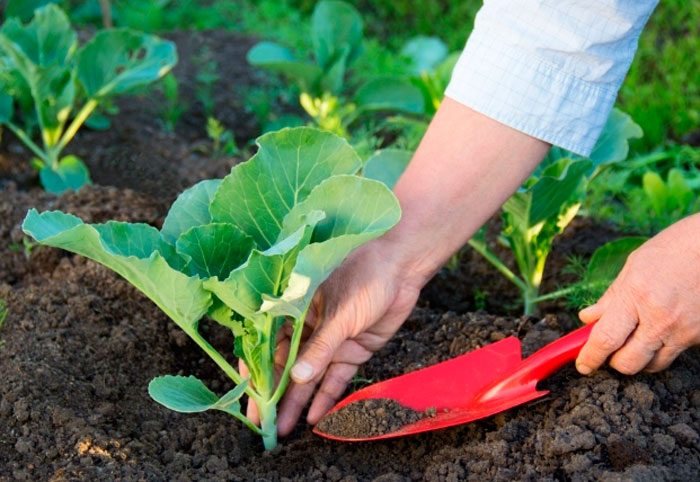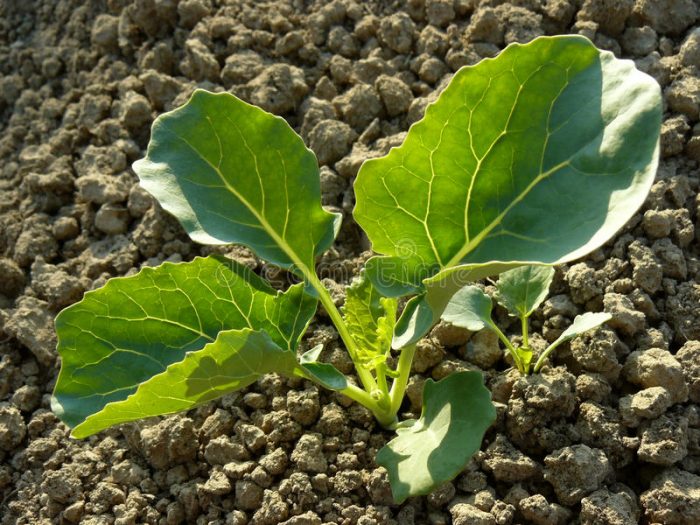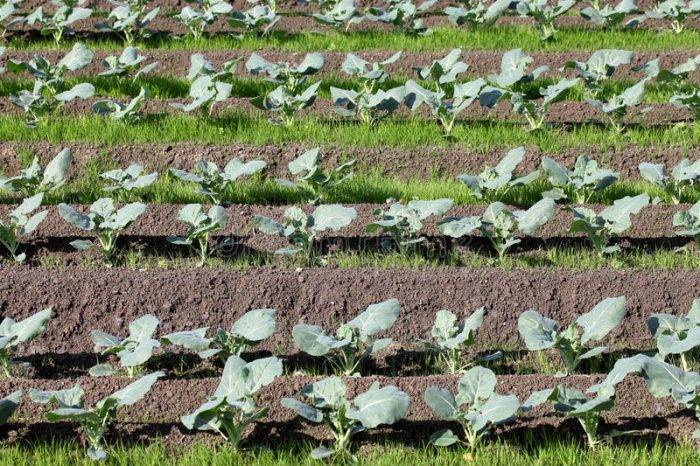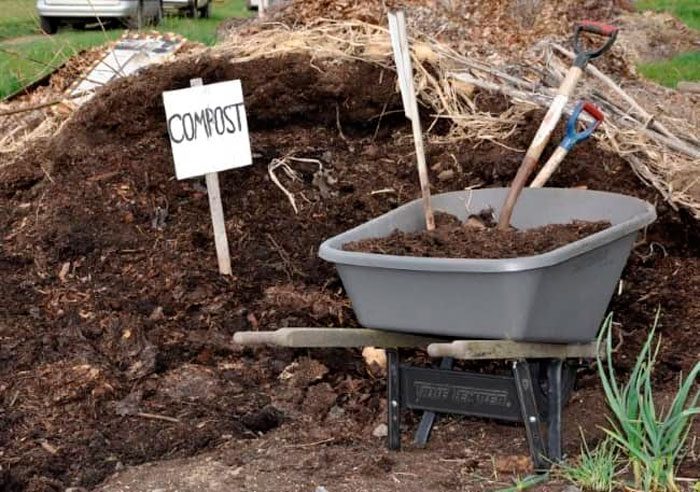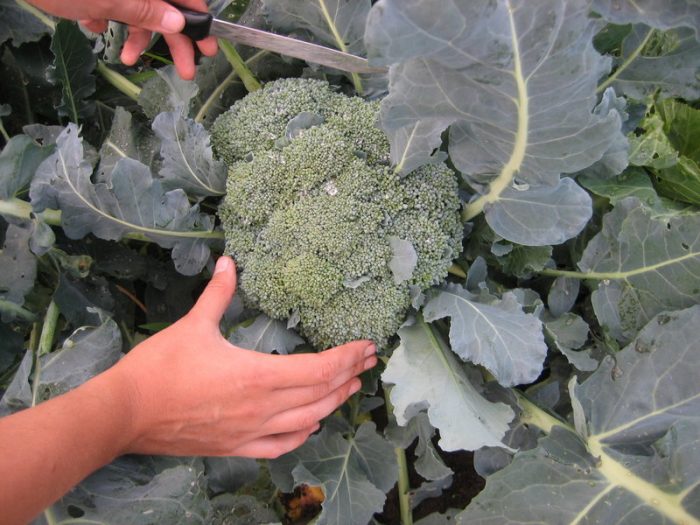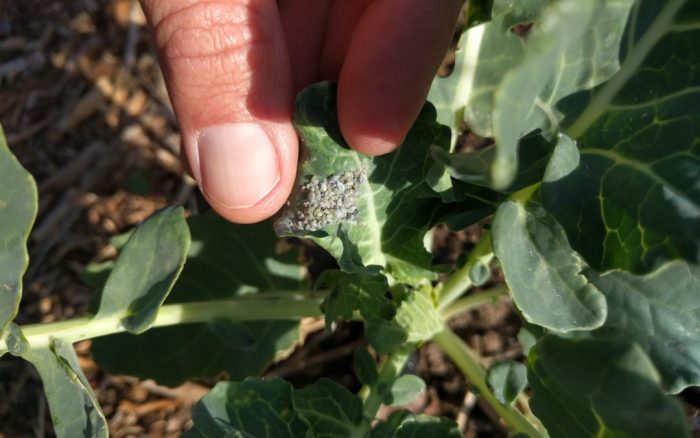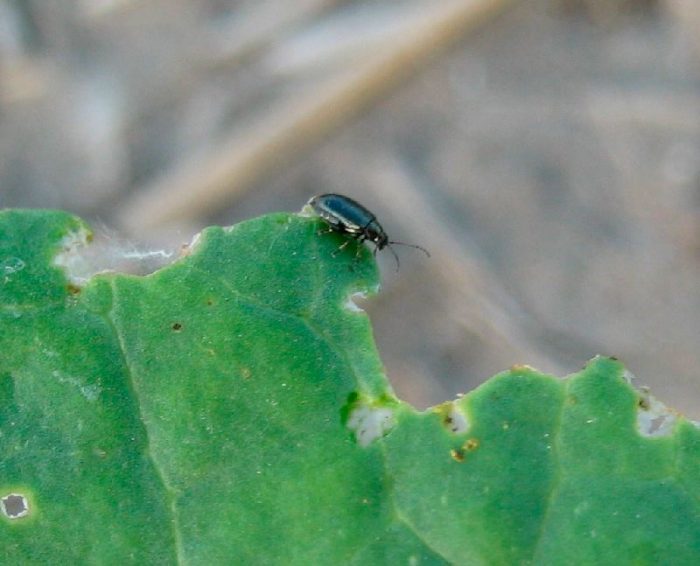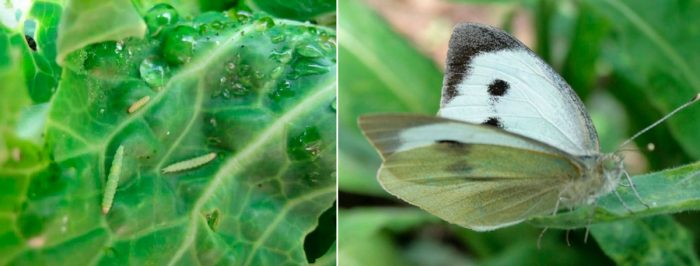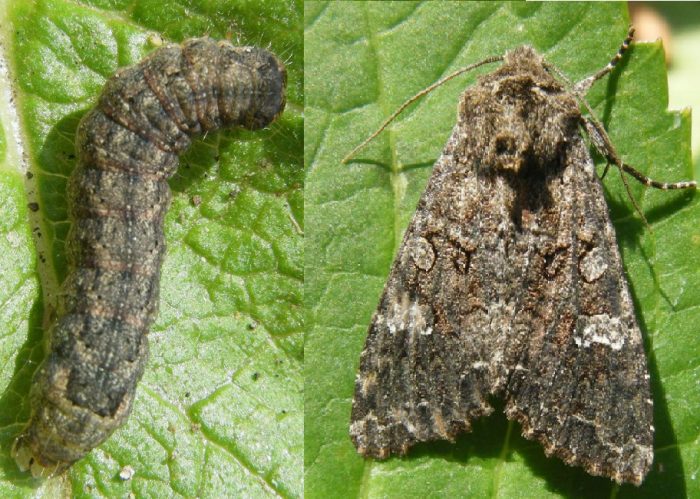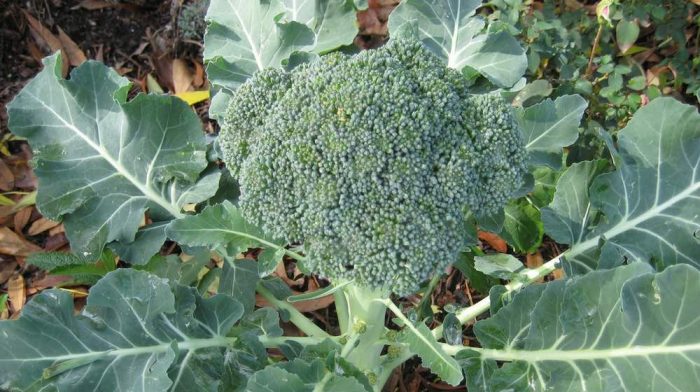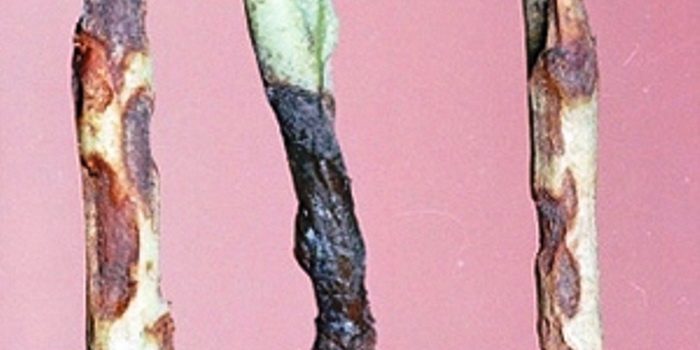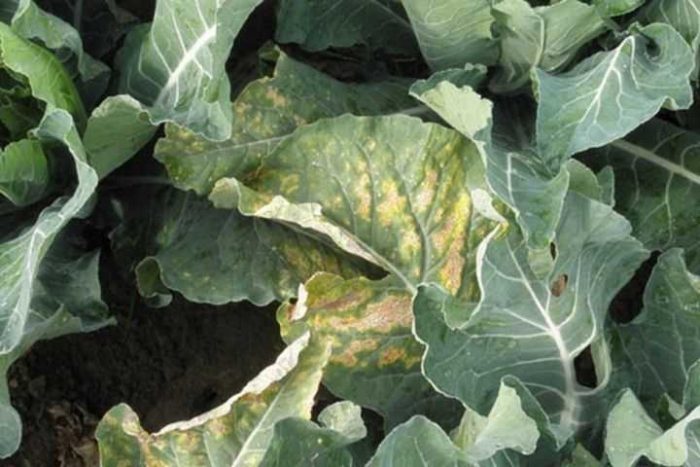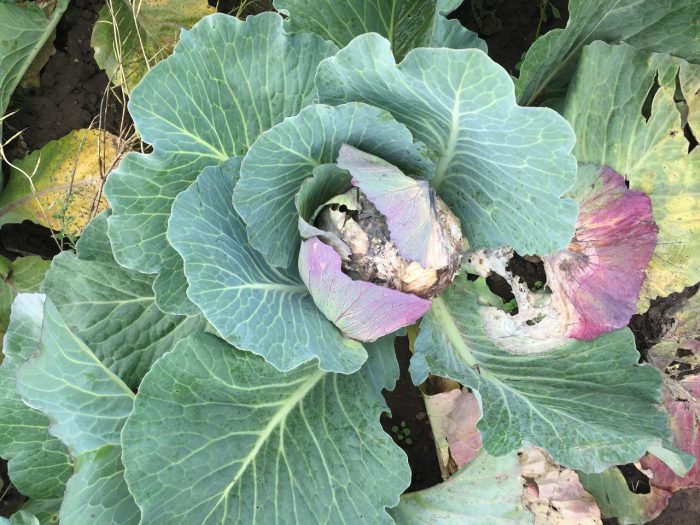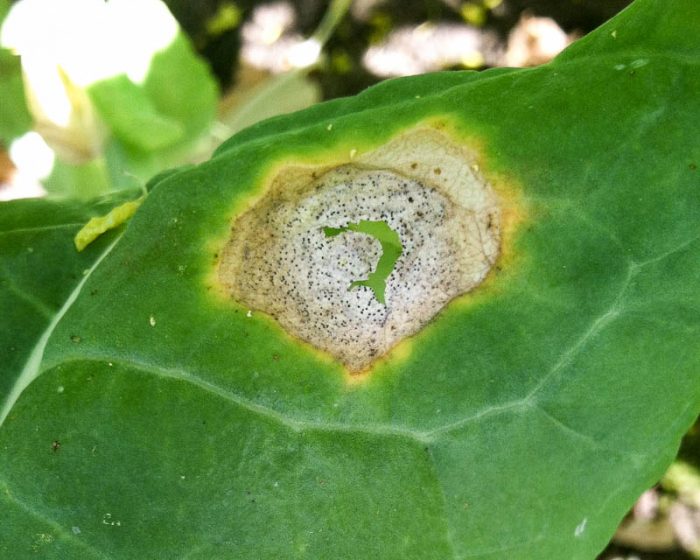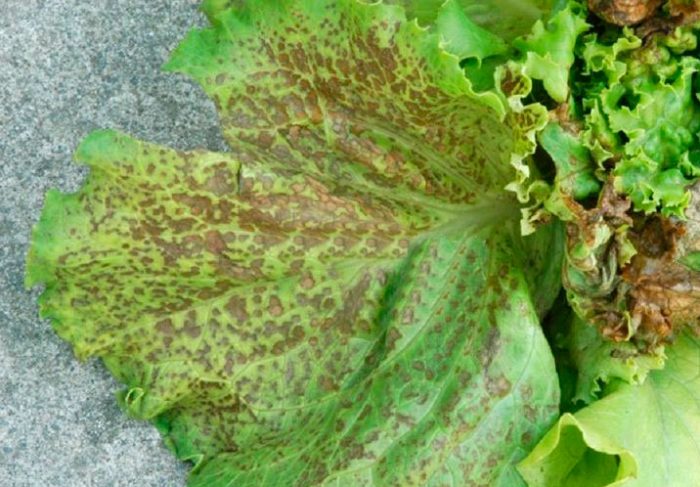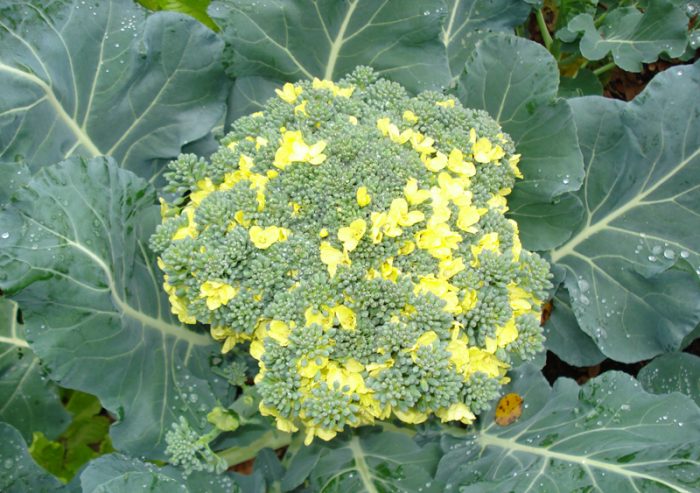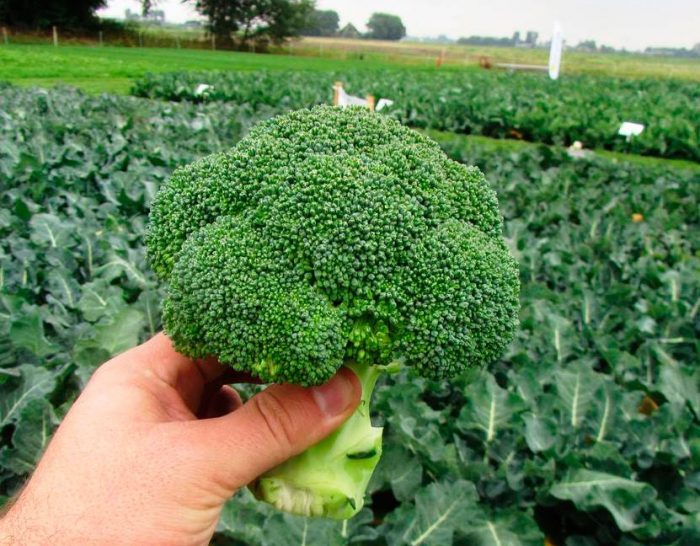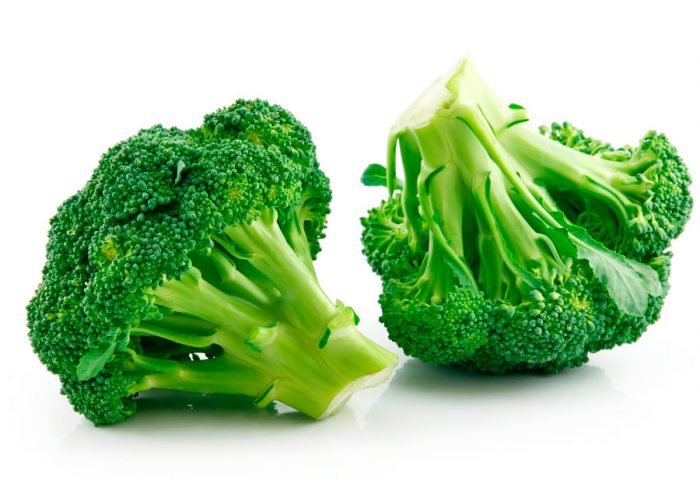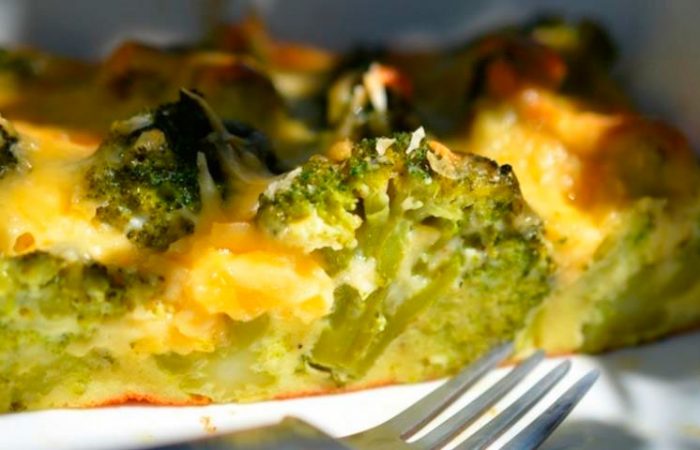The broccoli plant, also called asparagus (Brassica oleracea = Brassica sylvestris), is a variety of the well-known vegetable cabbage. This vegetable crop is an annual and representative of the Cabbage family. Unlike other subspecies, in which leafy plates are considered edible, unopened inflorescences are eaten in broccoli. Cauliflower and broccoli are considered very close relatives. More specifically, broccoli is the genetic precursor to cauliflower.
Asparagus is a hybrid that was born in the 6-5th century BC in the northeastern Mediterranean region. For many centuries, this plant was cultivated only in the territory of modern Italy. The word broccolo is translated from Italian as "cabbage flower stalk" (brocco - shoot). In the French treatise "General History of Plants" the earliest mention of this hybrid was found, which dates back to 1587. Broccoli came to England in the early 18th century, while it was called Italian asparagus at that time. In the same century, broccoli began to be grown in America, but this culture did not gain much popularity among the local population at that time. Only relatively recently, in the 20th century, commercial production of asparagus appeared in California, since that time the United States has been considered the largest producer of broccoli. Countries such as China, India, Israel, Turkey, Spain, France and Italy are not too far behind in this matter.
Content
Features of broccoli
Broccoli is very similar in appearance to cauliflower, but its inflorescences are colored green, not cream. In the first year of growth in asparagus cabbage, the stem grows to a height of 0.6–0.9 meters, many succulent peduncles are formed at its top, and they are crowned with green buds, which are collected in dense groups. And they, in turn, are part of a relatively small loose head. This head is eaten before the flowers form.The plant with yellowed buds is not used for food. When the head is cut off, new inflorescences form from the side buds in this plant. Due to this, broccoli fruiting lasts several months. Currently, asparagus is as popular among gardeners as beets, red and white cabbage, carrots and other vegetable crops, which are most often grown in gardens in the middle latitudes.
Growing broccoli from seeds
What time to sow
Sowing broccoli seeds for seedlings is carried out in the spring, or rather, from early to mid-March. Sowing seeds, if desired, can be carried out by conveyor belt method, for this they are sown at several times every 15 days until the second half of June. However, since the last days of April, seeds are sown in open soil. If the summer period in the region is relatively short and cool enough, then it is recommended to grow early and mid-season broccoli varieties. If you choose late-ripening varieties, then in this case the plants may not have time to ripen.
Growing broccoli seedlings
Sort the seed before sowing. To do this, you need to choose the largest seeds, then they are kept in very warm (about 50 degrees) water for 15 to 20 minutes. After the seeds are taken out of the hot water, they should be immediately placed in cold water. After that, the seed should be soaked in Epin's solution, in which it should stay for 12-15 hours. Then the seeds should be thoroughly rinsed under running water, and then placed on the refrigerator shelf for 24 hours, after which they are dried until they flow.
For sowing, a box is used, reaching a height of 25 centimeters. A good drainage layer should be laid on its bottom. The substrate should be water-permeable and loose, as well as slightly alkaline or neutral. It should include sand, humus, turf soil and wood ash. To begin with, the soil mixture must be well moistened, after which shallow (10–15 mm) grooves should be made on its surface, while the distance between them should be equal to 30 mm. After the seeds are distributed along the grooves, they will need to be repaired, and then the substrate is lightly tamped.
The seedlings of this culture are grown in the same way as the seedlings of white cabbage. Before the shoots appear, the crops should be in a relatively warm place (about 20 degrees). After the seedlings appear, the boxes should be rearranged to a cooler place (about 10 degrees) for 7 days. Then the seedlings will need the following temperature regime: on a cloudy day - 14 degrees, on a fine day - 16 degrees, and at night - 9 degrees. Broccoli seedlings need high air humidity, while it must be borne in mind that the soil mixture must always be slightly moist. But you cannot overdo it with watering, because prolonged stagnation of water in the substrate leads to the development of a black leg, which can destroy most of the plants.
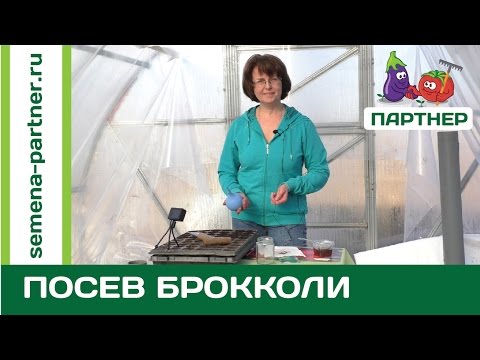

Watch this video on YouTube
Pick rules
After 15 days have passed from the moment the seedlings appear, you need to resort to picking them. For transplanting, it is recommended to use individual peat pots, it is in them that the plants will be later planted in open ground. For several days after the pick, the plants should be protected from direct sunlight, for this they are covered with paper sheets, while the temperature in the room should be about 21 degrees. After the seedlings take root, they will need fertilizing with fertilizer, which must include boron and molybdenum. In the daytime, seedlings should be provided with a temperature of about 17 degrees, and at night - 9 degrees.You should start hardening seedlings 15 days before transplanting them into open soil.
Planting broccoli outdoors
What time to plant
Seedlings of asparagus cabbage are planted at the age of 35–45 days, at which time the plants should have already formed 5 or 6 true leaf plates. As a rule, disembarkation is carried out in mid-May. However, if the soil has not yet warmed up well or there is a threat of recurrent spring frosts, experienced gardeners recommend postponing the planting to a later date.
The area suitable for planting should be well lit. It is best to plant broccoli in an area where carrots, grains, potatoes, green manures, onions, cucumbers and legumes were previously grown. On the site where cabbage, radish, turnip, beet, tomato or radish were previously grown, broccoli can only be planted after at least four years.
Suitable soil
The soil on the site should be slightly alkaline (pH 6.7-7.4) or neutral. Soil preparation should be done in the autumn, for this you need to dig it up by adding compost or manure (from 4 to 5 kilograms is taken per 1 square meter of the plot). Sour soil can be corrected by adding lime to it.


Watch this video on YouTube
Planting rules in open soil
It is recommended to plant seedlings in open soil on a cloudy day or in the evening, for this they use a 35x60 centimeters scheme. In each of the prepared planting holes, it is necessary to apply from 5 to 10 grams of complete mineral fertilizer, which should be thoroughly mixed with the soil. Then a plant is placed in the hole and filled with soil, which must be well tamped. The planted plants need good watering. If there is a possibility that recurrent frosts can be observed at night, then the broccoli area is best covered with a film, since if the temperature drops to minus 2 degrees, the plants will die.
Broccoli can be grown not only through seedlings, seeds can also be sown in open soil. This should be done only after the returnable spring frosts are left behind, as a rule, in the first half of May. Before sowing in open soil, the seed must be prepared in the same way as before sowing for seedlings (see above). The emerging seedlings need to be thinned, in this case it will be possible to increase the feeding area of the seedlings. To avoid thinning, seeds should be sown according to a 30x50 centimeters pattern.
Broccoli care
Growing broccoli is as easy as growing cauliflower. The plant needs to provide timely watering, weeding, feeding, as well as loosening the soil surface.
After 3 weeks after transplanting the seedlings into open soil, and then after another 1.5 weeks, the bushes should be carefully piled up, while the soil in the root zone should be thoroughly loosened. When growing asparagus cabbage, it is necessary to take into account that in the early stages of development, it can be severely damaged by the scorching direct rays of the sun; to avoid this, the bushes will need to be covered with unnecessary buckets or spruce branches. On hot days, watering broccoli is imperative, in addition to this, you should regularly humidify the air around the bushes, and the more often you do this, the better for the plant.
In the root zone, the soil should be loosened to a depth of 80 millimeters. Experienced gardeners recommend loosening and weeding a plot with broccoli one day after the bushes are watered.
How to water
On average, asparagus cabbage should be watered once every 7 days. However, if the outside air temperature is above 25 degrees, watering should be done more often, and it should be taken into account that they should be systematic and sufficient. In this case, the soil on the site should not become liquid mud. Also, do not forget to spray broccoli foliage more often, while taking into account that this procedure is carried out in the evening.
Fertilizer
In order for this type of cabbage to develop and grow normally, it should be systematically fed. The first top dressing must be done half a month after transplanting the seedlings into open soil; for this, a mullein solution is used (1 tbsp of organic matter per 10 liters of water). Pour 1 tsp into the resulting nutrient mixture. urea. If desired, the mullein can be replaced with a solution of chicken manure (1:20). If the seeds were sown in open soil, then the first time it will be possible to feed broccoli only 20 days after the seedlings appear. After 15–20 days after the first feeding, the plant is fed again and for this a solution of nitrate is used (1 matchbox of the substance per 10 liters of water). In the last summer weeks, asparagus no longer needs a lot of nitrogen, but at this time its need for phosphorus and potassium increases. For the third time, this culture is fed with the following nutrient mixture: 20 grams of ammonium nitrate, 40 grams of superphosphate, and 10 grams of potassium sulfate are taken for 1 bucket of water. When the central head is cut off, the bushes should be fed in order to enhance the growth of lateral shoots, for this they use the following composition: 20 grams of superphosphate, 10 grams of ammonium nitrate and 30 grams of potassium sulfate are taken for 1 bucket of water. For 1 bush, 1 liter of nutrient mixture is taken. For feeding, you can also use wood ash, it is distributed over the surface of the site, while 1 tbsp is taken per 1 square meter. fertilizers.
Growing broccoli in the Moscow region
Many gardeners are interested in whether broccoli varieties, which are successfully cultivated in regions with a warm climate, will grow in areas where the summer period is relatively short and cool enough? The fact is that this plant is highly frost-resistant, so it grows very well in regions with cool and cold climates. It is cultivated not only in the Moscow region, but also in the Urals, as well as in Siberia. And in order for broccoli cultivation to be definitely successful, out of more than 200 varieties of asparagus, you should choose those hybrids and forms that are most frost-resistant.
Broccoli pests and diseases
Broccoli pests
When growing broccoli, you should be prepared for the fact that you have to deal with pests, while taking into account that this crop is not particularly resistant to them. Cruciferous midges, whiteworm butterflies and scoops, aphids, cabbage flies, as well as slugs and snails can settle on such a plant.
Aphid
Aphids are considered a fairly widespread pest that can settle on almost any plant and destroy it. Colonies of this harmful insect settle on leaf plates, shoots and inflorescences of a plant, while on their surface they secrete a waxy substance. As a result of the vital activity of aphids, the leaf plates become discolored, they have a light pink tint, and then they twist. Such a pest multiplies extremely quickly, for example, in 1 season it is able to give about 16 generations, and all these individuals will cause significant harm to the plant day and night.
Cabbage fly
An adult cabbage fly is not particularly dangerous to broccoli, which is not the case with its larvae. They harm all members of the Cabbage family, as well as rutabagas, radishes and turnips. Moreover, they can settle both on very young bushes and on adult specimens. The larvae get to the root system of the bush and gnaw it, then they gnaw many passages in the shoots of the bushes.
Cruciferous flea
The cruciferous flea, as well as its larvae, gnaw grooves in the shoots of the bush, which leads to its drying out and death. In addition to broccoli, this pest can settle on watercress, turnips, horseradish and daikon.
Cabbage white
The cabbage butterfly (cabbage white) arranges egg-laying on the foliage of this cabbage.Caterpillars emerge from the eggs, gnawing the foliage most often at the edges.
Cabbage scoop
The cabbage scoop is a nocturnal moth, and its caterpillars harm most types of cabbage, as well as lettuce, onions and peas.
Snails and slugs
Snails and slugs gnaw small plants completely, while in larger specimens they gnaw rather large holes in the leaf plates.
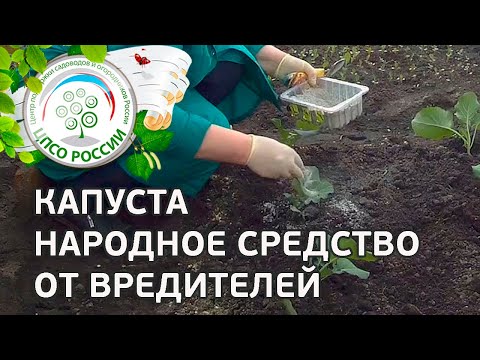

Watch this video on YouTube
Pest control
If aphids have settled on a broccoli bush, then it can be destroyed in various ways. So, if there are few pests, then you can try to crush them right on the plant. If there are a lot of aphids, then the affected bush is recommended to be treated with such folk remedies as ash-soap solution or infusion of potato tops. If these funds turned out to be ineffective, then insecticidal agents such as Actellik or Iskra-bio can be used for treatment, while when spraying the bushes, you must follow the instructions attached to the drug. In order to get rid of the cabbage fly, it is necessary to treat the bushes with a solution of the drug Rovikurt or Ambush (1%), and you can also use such agents as Anometrin or Corsair. To drive the cruciferous flea from the bushes, on the surface of the soil between the rows, you need to evenly distribute celandine or tansy powder. If there are a lot of pests, then the bushes will need to be sprayed with a solution of Foxima or Actellik (1%). To get rid of scoops and cabbage, you can use drugs such as Belofos, Anometrin, Foksim, Ambush, Talkord, Rovikurt and other similar actions, while during processing, you must follow the instructions attached to the tool. To eliminate gastropods, it is recommended to make grooves around the perimeter of the garden bed, and their bottom should be covered with tobacco dust, wood ash, lime or ground hot pepper. Neither slugs nor snails will be able to get over such grooves.
In addition to these harmful insects, less often on the bushes of asparagus cabbage such as: babanukha, wavy and black fleas, harmful centipedes, cabbage moth, cabbage moth, cabbage and rapeseed bugs, root and rapeseed burrowing bugs, common bear, common scoops, winter and gamma, rape flower beetle, tobacco thrips and dark nutcracker. It is recommended to use biological or chemical pest control agents only if there are a lot of insects and there is a threat of losing most of the crop. Is it possible to grow such a cabbage without the use of harmful drugs and at the same time protect it from pests? The most important thing is to adhere to the rules of agricultural technology of this culture, you also need to properly care for the plants, namely: before sowing, it is imperative to process the seed and soil, you need to remove the weed from the site in a timely manner, in the fall you need to dig up the garden bed, having previously removed all plant residues from it.
Diseases
When cultivating asparagus in open soil, diseases such as black leg, keela, alternaria, leucorrhoea, white and dry rot, peronosporosis, mosaic, vascular bacteriosis and fusarium can affect it.
Blackleg
The seedlings of this plant are most often affected by the black leg. In affected seedlings, the neck softens, as a result, it turns black. Then there is a thinning and lodging of the stem. For prevention purposes, do not forget to thin out the seedlings, and also make sure that the substrate is not waterlogged. Affected seedlings need to be pulled out, and those that remain are spilled with a weak solution of manganese potassium of pink color (3-4 grams of substance per bucket of water). After such treatment, the seedlings are not watered for 7 days. For prevention purposes, healthy seedlings can be treated with Fitosporin, Baktofit, Fitolavin-300 or Planriz.
Keela
If the bush is affected by a keel, then spherical or oval growths appear on its surface, over time they turn brown and begin to rot. Diseased bushes fade and outwardly look underdeveloped. Affected specimens cannot be saved, so they must be pulled out and burned. In order to prevent keels in the area where asparagus was grown, it is recommended to plant chard, spinach, onions, garlic or beets, these crops will clear the soil of keel pathogens in a couple of years, and plants such as eggplant, physalis, potatoes, tomatoes or peppers will cope with this task in 3 years.
Belle
If a specimen is affected by linen, then a plaque appears on its foliage, testes, pedicels and shoots, which is similar to specks of oil paint. Over time, the affected parts turn brown and dry out, while swelling and curvature of the leaf plates occurs. Infected plants cannot be cured, so they must be dug up and destroyed. Those plants that remain must be sprayed with a solution of a product containing copper. In order to prevent the disease, it is necessary to follow the rules of crop rotation, and also to remove weeds in a timely manner.
Alternaria
When a plant is infected with Alternaria, necrotic spots of brown color are formed on its parts located above the ground. As the disease progresses, they increase in size and turn into brown concentric spots, on the surface of which there are fungal spores. The carriers of this disease are harmful insects. Before starting sowing, in order to prevent this disease, it is imperative to warm up the inoculum by placing it in hot water for a third of an hour (described in more detail above). Do not neglect the rules of agricultural technology of this plant, remove weeds in time, and in autumn, be sure to clear the site of plant debris.
Peronosporosis
If the bush is infected with downy mildew (peronosporosis), then light yellow spots appear on its leaf plates, while a white bloom is observed on the seamy surface of the leaf. For preventive purposes, do not forget about the pre-sowing preparation of the seed. Diseased seedlings should be pollinated 3 times with an interval of 7 days with ground sulfur, wood ash or a mixture of lime and sulfur. If the plant is very badly affected, then to process it, you need to use a Topaz solution (1 ampoule of agent for 1 bucket of water).
White rot
When broccoli is affected by white rot, shoots may begin to rot, or a coating of cobwebs appears on the seamy surface of the foliage. Bushes grown in acidic soil, which contain a large amount of nitrogen, are often affected, while plants are infected in cool weather. To cure the affected specimens, they must be treated with copper-containing agents. As a preventive measure, it is necessary to follow the rules of crop rotation, lime the acidic soil in time, remove weeds and plant residues from the garden in time.
Dry rot
If the bush is infected with dry rot, then light-colored specks with black dots form on the leaf plates, while the growth of the bush slows down, the stem tissue is destroyed, and dry areas appear on it. Dry rot is fought in the same way as with downy mildew.
Mosaic
At the very beginning of the defeat of the plant by mosaic, poorly distinguishable spots are formed in the interveinal region. Over time, deformation of the foliage is observed, a border of a dark green color forms on it, and pale necrotic spots appear on its surface. Today, viral diseases are considered incurable, so all affected specimens must be dug up and destroyed.For preventive purposes, it is necessary to remove weeds from the site in a timely manner, also make sure that there are no aphids or other pests on the bushes that are carriers of the causative agents of this viral disease.
Vascular bacteriosis
When a plant is damaged by vascular bacteriosis, the edge of the leaf plates turns yellow, and over time it becomes like parchment to the touch, while the veins darken. As the disease progresses, the infected parts of the bush die off. Diseased specimens should be sprayed with biological agents, for example: Trichodermin or Planriz (follow the instructions attached to the drug). For preventive purposes, before sowing, do not forget to warm up the seed, remember the rules of crop rotation, and also remove plant residues from the site in the fall.
Fusarium wilting
If broccoli is infected with tracheomycosis (fusarium wilting), then the leaf plates turn green-yellow (often only on one side). The foliage looks sluggish, its development is uneven, its deformation and fall is observed. To combat such a disease, fungicidal preparations from the benzimidazole group are used. As a preventive measure, you need to follow the rules of broccoli agricultural technology, the affected bushes should be dug up and burned as soon as possible.
If growing asparagus cabbage incorrectly takes care of it, then the chances that it will get sick or be damaged by pests increases significantly. If the plants are well-groomed and strong, then they will have a very high resistance to both diseases and pests.
Types and varieties of broccoli
When comparing cauliflower and broccoli, the latter has several benefits. So broccoli:
- has a very high frost resistance;
- quite resistant to harmful insects;
- high-yielding and repairing ability;
- differs in undemanding to growing conditions;
- both inflorescences and young shoots (up to 15 centimeters long) are considered edible.
There are 2 varieties of such cabbage: the familiar form of calabrez - it has dense inflorescences and a rather thick stem, and also the Italian form (asparagus broccoli) - it has a large number of shoots with relatively small inflorescence heads.
There are about 200 species of this plant. According to the ripening period, all varieties are divided into early ripening, medium and late ripening. Below will be described those varieties that are most popular with gardeners.
Early maturing varieties
- Tone... This variety is one of the most productive and tasty. The ripening period is 70–90 days. The dark green large head is of medium density and weighs about 200 grams. When the central inflorescence is cut off, an intensive growth of lateral suckers will begin, which weigh from 50 to 70 grams.
- Broccoli F1... This medium-yielding hybrid has a large, medium-density head that is colored malachite green. This plant is used for food fresh, as well as processed.
- Linda... The bush is of medium height. Ripening period - 95 days. On average, the central head weighs about 0.3–0.4 kg, and the weight of the lateral offspring is 70 grams. This variety is eaten fresh, and is also used for freezing and conservation.
- Vitamin... The ripening period of this variety is 72–90 days. The dense central head of a dark green color has a mass of 130–250 grams. When the central head is cut off, lateral inflorescences will grow in 10-15 days, reaching 40-50 mm in diameter.
- Curly head... This variety is resistant to many diseases, as well as to adverse weather conditions. Ripening period from 80 to 95 days. The dense central head of green color weighs on average 0.6 kg. When the main head is cut off, active growth of a large number of lateral inflorescences begins.
In addition to these early maturing varieties, Summer King, Comanche, Green Sprouting, Vyarus are often grown, as well as such hybrids as: Emperor, Corvette, Laser, Tribute and Fiesta.
Mid-season varieties
- Senshi... This vigorous variety ripens within 110 days. The solid large head is dark green in color and domed. This variety is suitable for long-term storage.
- Compact... The ripening period of this variety is about 100 days. The compact bush has a dark green domed main head. This variety is suitable for dense planting.
- Calabrese... Ripening period - 90 days. Dark green medium density heads weigh about 0.4 kg. The mass of lateral inflorescences is about 100 grams, they grow 6 or 7 pieces.
- Grinia... This variety has a very high yield. The height of the rosette, consisting of sheet plates, is about 0.6 m, and the main head weighs about 300 grams.
- Atlantic... The stem reaches a height of 0.5–0.6 m. Large heads are quite dense, while the main mass is about 0.4 kg.
Still quite popular among gardeners are such varieties and hybrids of an average ripening period as: Arcadia, Balboa, Genoa, Greenbelt, Gnome, Green Favorite, Monton, Fortuna and Caesar.
The best late-ripening varieties
- Hybrid Lucky... The main head is dense and large, weighing about 500 g. It has a delicate texture and green color.
- Monterrey hybrid... Differs in high productivity. The mass of the central head is about 0.5 kg. The peculiarity of this hybrid is that it does not grow lateral inflorescences.
- Continental... The main head is large and dense, weighing about 0.5 kg.
- Marathon hybrid... The leaf rosette of this variety is raised, the green dense main head has a delicate texture and weighs about 0.7 kg.
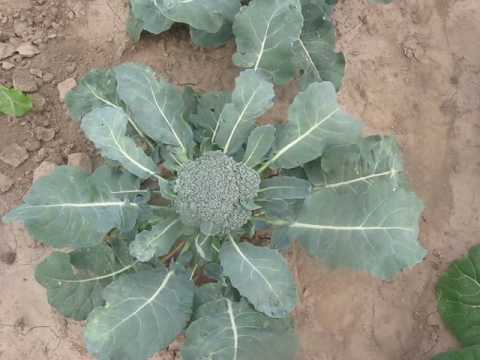

Watch this video on YouTube
Broccoli properties: harm and benefit
Health benefits of broccoli
Already in the days of ancient Rome, broccoli was considered the queen of cabbage, because it is the owner of medicinal properties. This plant contains B vitamins, vitamins E, A, PP, K, C and U. Oranges and lemons contain less vitamin C than broccoli, while vitamin U in it is almost the same as in asparagus, it is known to be excellent at healing ulcers. This plant also contains the following micro and macro elements: potassium, calcium, magnesium, sodium, manganese, phosphorus, iron, zinc, selenium and copper, it is rich in beta-carotene, chlorophyll, fiber, amino acids, protein containing isoleucine and lysine. It also contains methionine and choline, which prevent cholesterol from accumulating in the human body. These vitamins and elements are needed by a man for normal life, and in asparagus they are in a form that is easily assimilated for the body.
This plant is very beneficial for people with diabetes mellitus because it helps to normalize insulin in the body and protect the vascular walls from damage caused by high blood sugar. Experts recommend that people who live in regions with an increased radiation background, as well as those who have suffered from radiation, systematically eat asparagus cabbage, because it can cleanse the body of free radicals, toxins and heavy metal ions. This plant also eliminates the puffiness that accompanies cellulite, so if you eat it regularly, then over time, the skin will become taut and smooth.
Not so long ago, scientists conducted studies, as a result of which it was found that sulforaphane is a part of asparagus, which inhibits the development of cancer cells and is very effective in treating the following diseases: breast, bladder, skin, ovarian and prostate cancer. But it should be borne in mind that this substance is part of the stems and shoots of such a plant, but it is not in the inflorescences.In people who ate broccoli about twice a day, tumor growth was stopped.
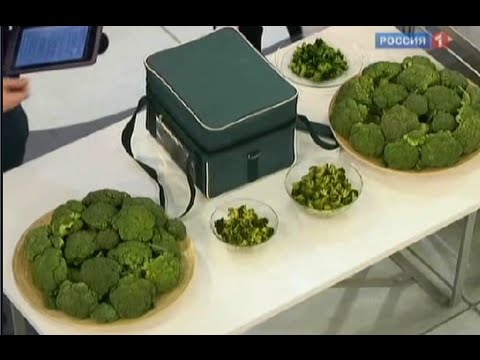

Watch this video on YouTube
Contraindications
Asparagus cabbage is not suitable for cooking vegetable broths, since during cooking guanine and adenine are released into the water, which can harm the human body. It should also be borne in mind that with prolonged boiling, and even during baking in the microwave, most of the nutrients that are part of this plant are destroyed. Frying broccoli in a large amount of oil or fat leads to the formation of carcinogens in it, and the product completely loses its beneficial properties, and, moreover, can harm a person.
To get only the benefits of asparagus, you need to eat it fresh or learn how to cook it properly. It should be noted that in case of dysfunction of the pancreas, as well as increased acidity of the stomach, such cabbage cannot be eaten. Postoperative patients should be very careful about broccoli, as it contains coarse fiber, and it is very heavy for a weakened body.
Broccoli recipes for health
Broccoli recipes to help heal the body:
- Casserole... Pour 200 grams of asparagus into salted boiling water, after 2 minutes. it is thrown into a colander and dried. It is necessary to cut 200 grams of ham into strips. Whisk the egg white and 100 grams of cream thoroughly. Pour cabbage into a greased form, put the ham on top of it and pour everything over with protein, salt to taste. Sprinkle the mixture on top with chopped herbs (you can take any) and 100 grams of grated cheese. Bake in the oven at 180 degrees.
- Soup... Rinse with 0.4 kg broccoli, then disassemble the heads into small florets. Boil it for 2 to 3 minutes. in salted boiling water, in which you can put your favorite spices. For a third of an hour, 30 grams of almonds should be poured with freshly boiled water. After the skin is removed from it, it is ground in a blender. Mix the cabbage with almonds and add portions of the broth left over from the broccoli boiling. The mass must be crushed to a puree-like consistency. Pour 1 tsp into the puree soup. vegetable oil, as well as 10 grams of walnut oil. The soup is poured into a bowl and sprinkled with sesame seeds on top.
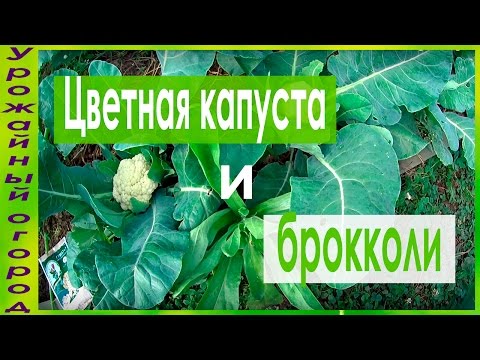

Watch this video on YouTube

